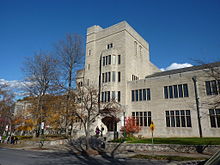
WASHINGTON – New resource offers intellectual property education resources for parents, teachers, and students of all ages.
The U.S. Department of Commerce’s United States Patent and Trademark Office (“USPTO”) recently announced the launch of its newly redesigned KIDS! Web pages aimed to encourage students of all ages to learn about the importance of intellectual property (“IP”) creation and protection. In addition to featuring young inventor profiles, activities, and videos, the pages also offer curricula that link Science, Technology, Engineering, and Math (“STEM”) education to IP and innovation through downloadable lesson plans, hands-on instructions for building inventions, USPTO career information and other useful resources.
“The USPTO looks to our children – the doers, makers, and tinkerers of the future – to reimagine the world and, as the Constitution calls for, ‘to promote the progress of Science and the useful Arts’ like never before,” said Michelle K. Lee, Deputy Under Secretary of Commerce for Intellectual Property and Deputy Director of the USPTO. “As schools across the country ramp up their STEM programming, we look forward to putting even more tools in teachers’ hands that will ensure our next generation is well-versed in concepts of making, inventing, and creating the high-value intellectual property that drives our economy.” USPTO’s updated KIDS! Web pages also feature coloring pages designed to introduce younger students to patents and trademarks, an audio library of trademarked sounds, upcoming event listings, and other challenging activities to help encourage and inspire future generations of inventors. For more information, please visit www.uspto.gov/kids.
 Indiana Intellectual Property Law News
Indiana Intellectual Property Law News




 Trademark Office
Trademark Office In 2013,
In 2013, 
 “IP Jurisprudence in the New Technological Epoch: The Judiciary’s Role in the Age of Biotechnology and Digital Media.” The program will run from 9 a.m. to 5 p.m. and will provide 6.5 hours of continuing legal education.
“IP Jurisprudence in the New Technological Epoch: The Judiciary’s Role in the Age of Biotechnology and Digital Media.” The program will run from 9 a.m. to 5 p.m. and will provide 6.5 hours of continuing legal education.